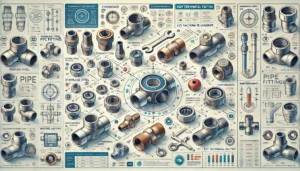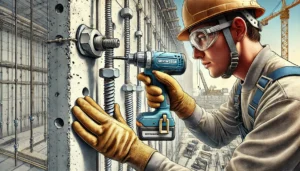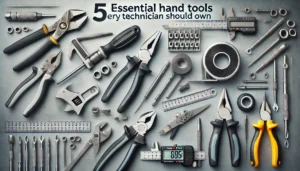The development of drills tells you just how clever people are as it shows the transition from basic handheld tools to modern day smart technology. This has taken thousands of years, showcasing important milestones enabling us to understand how drilling is used by a multitude of services processes.
Creating The First Holes: Early Manual Drills
Drilling was first started in prehistoric periods, when early humans used basic tools to carve holes in primitive items such as wood, bone and stone. One of the most fundamental drilling tools is the bow drill. It dates back to 3000 B.C., and it was discovered in ancient Egypt. This device used a basic principle – a cord was wrapped around a spindle and fastened to a bow. When the bow was pulled back and forth, the spindle turned, enabling the user to create holes with more efficiency than previous methods. The bow drill did not only have constructive purposes, but was also essential in fire-starting and other areas, demonstrating its multifunctional nature in society.
Advancements in Mechanization: The Auger and Brace
As these civilizations progressed, so did the sophistication of tools they used. The Roman Period introduced the auger drill, a tool meant to bore deep precise holes for woodworking. The auger’s helical screw blade was designed to both serve as a drill bit and erase debris from the hole, improving efficiency. After this came development during the Middle Ages, where the brace, a U-shaped tool that enabled greater torque control over the drilled hole, came into play. The brace with bits of different designs became a basic tool every woodwork needed and it survived for centuries.
The Beginning of Electric Drills
In the late 19th and early 20th century, electric power brought on new innovations, notably, the creation of an electric drill by Arthur James Arnot and William Blanch Brain in the year 1889. The stationary drill was initially designed for industrial use, and was enormous in size and power consumption. However, this was only the first of many changes to come. Black and Decker released a portable, pistol-gripped version of the drill in 1916 which changed the industry as it allowed for ease of use in various projects. The trigger switch design has remained the same as well, making it easier to function with one hand. As a result, the efficiency and speed of construction and manufacturing grew.
The Rise of Cordless Technology
In the second half of the 20th century, cordless drills further increased the range of mobility of users. These drills are powered by rechargeable batteries, enabling them to offer unparalleled movability while freeing users from cumbersome power cords. The first models utilized NiCd batteries which were effective but had many limitations due to being overweight and having a low energy capacity. The shift to lithium-ion batteries addressed many issues by providing longer runtimes, being lightweight, and having faster charging times. The introduction of cordless drills transformed both professional and personal settings as they became a standard tool that anyone could easily use.
Integration of Smart Features
By the 21st century, drills began evolving into smart tools with features that enhanced precision, safety, and overall experience for the user. Modern smart drills make use of advanced digital interfaces, allowing users to check and adjust settings like speed and torque. Additional features like laser and digital levels help the user achieve the precise angle and depth required while reducing error and material wastage. Intelligent speed and torque features further prevent damage to the tool and workpiece by adjusting to different materials. Touchscreen displays offer an expansive set of capabilities as they provide control panels and with connectivity options, enabling integration with other smart devices.
The Future of Drilling Technology
Considering today’s advancements in technology, advancements in drills will inevitably entail extensive integration of Ai and automation. It is possible to predict drills that evaluate the characteristics of materials being drilled in real time, self-modifying their parameters, and giving inputs to the user through augmented reality interfaces. Economical energy and responsible development will also be important, with designer’s emphasis being placed on green materials and energy. The integration of use and precision into drills has transformed them from merely manual devices to smart implements, this brings into account the need to constantly ensure quality in the designs.
To summarize, the history of the drill aptly reflects the story of mankind, showcasing how it has coped with the challenges that each period has presented. From the most basic bow drills of ancient civilizations to the modern most sophisticated smart drills, each iteration depends on its predecessors, making evolution of this invaluable tool more reliable.










